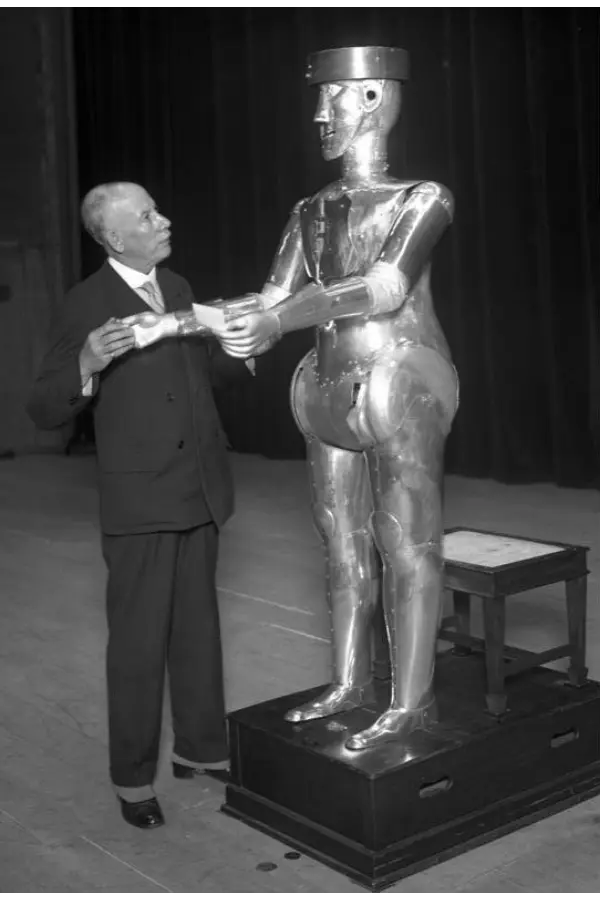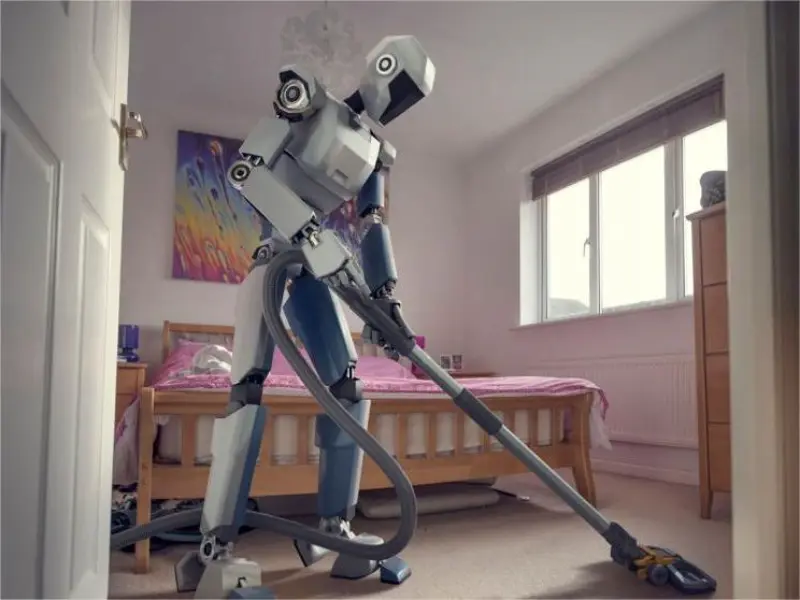- A robot is a machine that is programmed by a computer to automatically perform a series of complex actions. The robot can be autonomous or semi-autonomous and can be guided by an external control device, or controls can be embedded in it.
- Nowadays, robots help humans in manufacturing automation, medical operations, scientific exploration, convenience services and literary arts
Robots help humans by performing tasks that are challenging, dangerous, or impractical for humans to accomplish alone. They complement human abilities, enhance productivity, and contribute to progress and innovation across various industries and applications.
Robots and their types
A robot is a machine that is programmed by a computer to automatically perform a series of complex actions. The robot can be autonomous or semi-autonomous and can be guided by an external control device, or controls can be embedded in it.
Robotics is the branch of technology concerned with the design, construction, operation, and application of robots and computer systems for control, sensory feedback, and information processing. The construction of robots may be reminiscent of the human form, but most robots are task-performing machines whose design focuses on pure function rather than expressive aesthetics.
These technologies involve automated machines that can replace humans in hazardous environments or manufacturing processes, or look, act, or cognitively resemble humans. Many of today’s robots are inspired by nature and contribute to the field of bionic robotics. These robots have also created a new branch of robotics: soft robots.
In 1928, Eric, the first humanoid robot, was shown and presented at the annual exhibition of the Society of Model Engineers in London. The robot’s frame, invented by WH Richards, consists of an aluminium armoured body with 11 electromagnets and a motor powered by a 12-volt power supply. The robot can move its hands and head and can be controlled by remote control or voice control.

From humanoid robots such as Honda’s Advanced Innovative Mobile Robot (ASIMO) and TOSY’s TOSY Table Tennis Robot (TOPIO) to industrial robots, medical operation robots, patient assistance robots, dog therapy robots, collective programming swarm robots, General Atomics MQ-1 Predator and other drones, and even miniature nanorobots, robots are becoming more and more diverse and powerful.
Many companies in the field of science and technology and finance at home and abroad are involved in the manufacturing of robots, it can be said that robots will be promising in our future lives. Take tech giants Tesla and Baidu for example.
Musk announced the Tesla Bot during the company’s AI Day event. The Tesla Bot is envisioned as a humanoid robot designed to perform repetitive tasks that are unsafe, boring, or physically demanding for humans. The robot is intended to be friendly and non-threatening, with a design that resembles a human.
Baidu, often referred to as “China’s Google,” is a major technology company known for its search engine and AI-related products and services. Baidu has also ventured into the development of robotics and autonomous systems. One of its notable robot projects is the Xiaodu Robot. The Xiaodu Robot is an AI-powered smart speaker and home assistant developed by Baidu. It is designed to provide voice-activated assistance for various tasks, such as setting reminders, answering questions, playing music, controlling smart home devices, and more.
The Xiaodu Robot utilises Baidu’s natural language processing (NLP) and voice recognition technologies to understand and respond to user commands. In addition to the Xiaodu Robot, Baidu has been involved in other robotics initiatives, including research and development in areas such as autonomous driving, service robots, and healthcare robotics. Baidu’s expertise in AI and robotics aligns with its broader vision of leveraging technology to improve people’s lives and advance various industries.
Five ways that robots help humans
1. Manufacturing automation
Industrial robots are widely used in manufacturing processes, especially in automating repetitive and labour-intensive tasks such as assembly, welding, painting and packaging. They increase efficiency, accuracy and productivity while reducing the risk of worker injury.
For example, in the automotive manufacturing industry, robots are used to assemble complex components such as engines and transmissions, automating assembly lines. They can easily handle heavy parts and ensure consistency and accuracy during assembly. Some robots can perform arc welding, spot welding and other welding techniques with high accuracy and speed.
Robots are used for material handling and packaging tasks in warehouses and distribution centres, optimising cargo flows and shortening order processing times. Visually guided robots equipped with cameras and sensors are used in manufacturing processes to identify defects, measure dimensions, and check the integrity or consistency of components.
Also read: How are robots used in the food industry?
2. Medical and operational assistance
Robots are increasingly being used in healthcare settings to assist healthcare professionals and improve patient care. Surgical robots such as the Da Vinci Surgical System can perform minimally invasive procedures with precision and flexibility, thereby reducing recovery time and complications. Robots are also used for tasks like medication dispensing, patient lifting and transport, and rehabilitation therapy.
During natural disasters, accidents or other emergencies, robots equipped with sensors, cameras and other technologies are deployed in search and rescue operations. They can navigate dangerous environments, find survivors, and provide critical information to rescue teams without risking their lives. Drones equipped with cameras, thermal imaging sensors, and other sensors are used to survey disaster areas from the air, providing real-time aerial footage and identifying areas of interest.
3. Scientific exploration and discovery
Robots are an important tool for exploring environments that are difficult or dangerous for humans to access, such as outer space, deep ocean exploration, and extreme environments such as volcanoes or radioactive areas. Robotic probes, rovers, and drones collect valuable data, conduct experiments, and provide insights into these uncharted territories.
NASA’s Mars rovers like Curiosity and Perseverance, explore the surface of other planets and moons. Equipped with cameras, spectrometers, and other scientific instruments, these rovers collect data about the geology, atmosphere, and potential habitability of celestial bodies.
4. Assisted living and convenience services
Robots are developed as assistive devices to improve the quality of life for people with disabilities or age-related limitations. These robots can help with tasks such as mobility assistance, housework, personal care, and communication, enabling individuals to live more independently and participate more fully in society.
Devices like the Roomba series from iRobot autonomously clean floors in homes. Equipped with sensors, these robots navigate around obstacles, avoid stairs, and efficiently vacuum various floor surfaces.
Also read: Samsung’s automatic robot vacuum: No more housework?
Security robots, such as the Knightscope K5, patrol indoor and outdoor spaces, monitoring for suspicious activity and potential security threats.
5. Education and literary arts
Robots are valuable tools for education and research. They are used in academic settings to teach students robotics, programming, and engineering principles. Researchers use robots to study human-computer interaction, artificial intelligence, machine learning, and other areas of research to advance technology and improve the capabilities of robots.
Artists like Daniel Rozin and Rafael Lozano-Hemmer use robotics and computer vision technologies to create interactive artworks that mirror and transform the viewer’s image in real time, inviting them to become active participants in the creative process.

